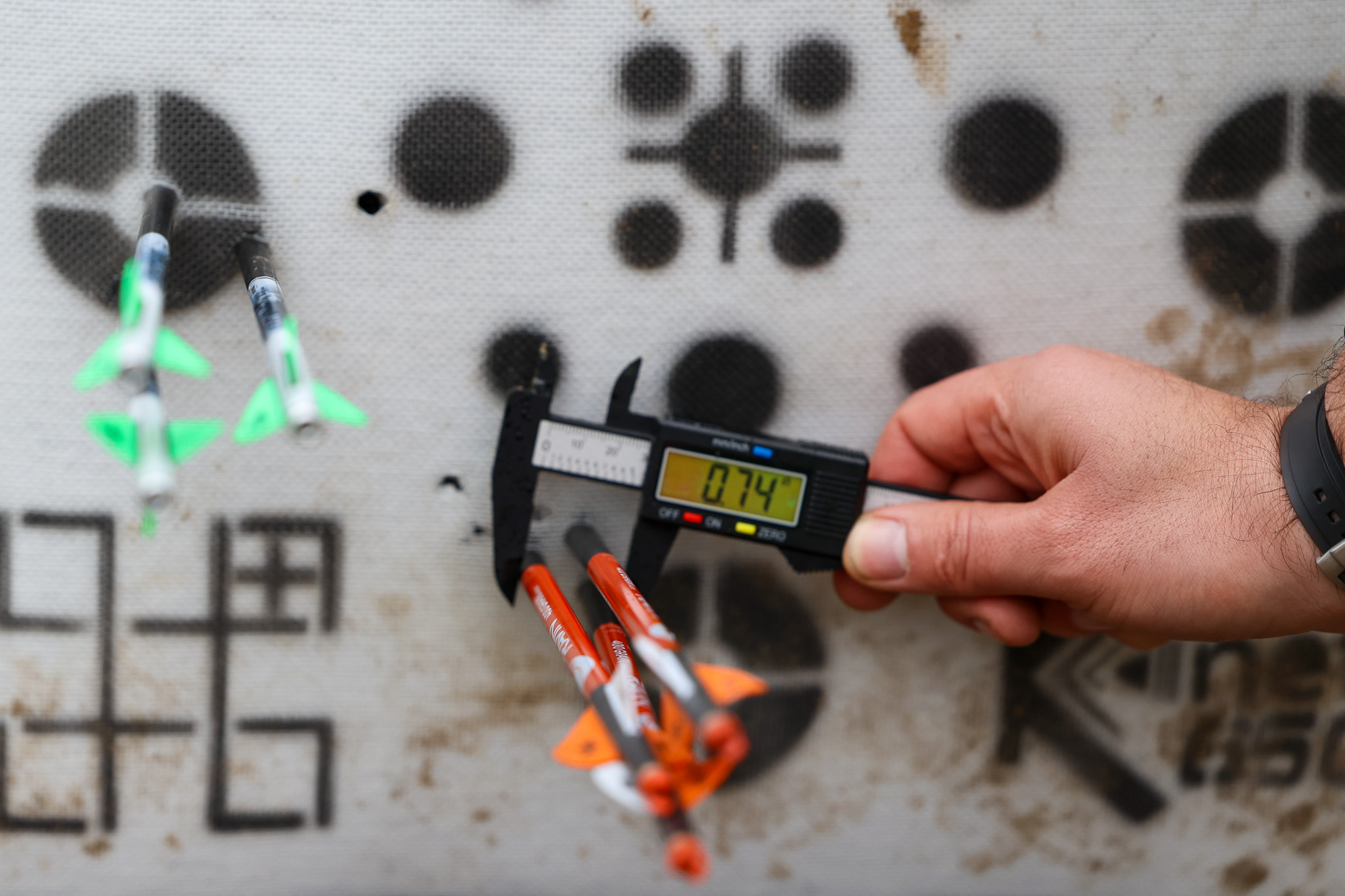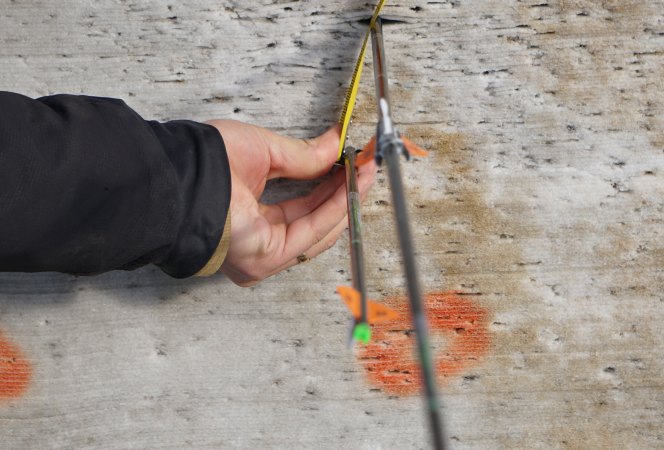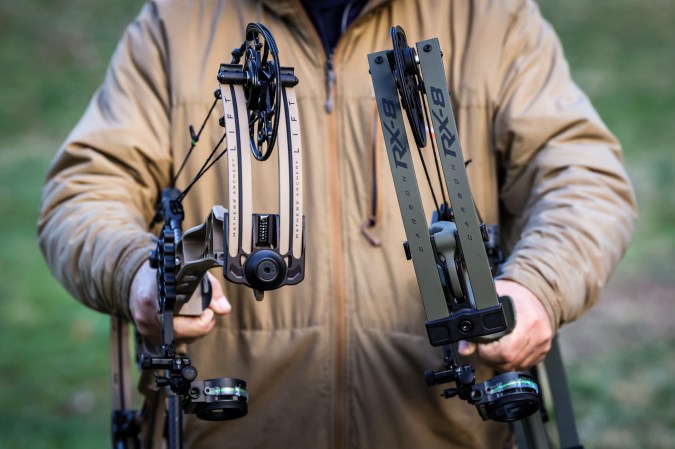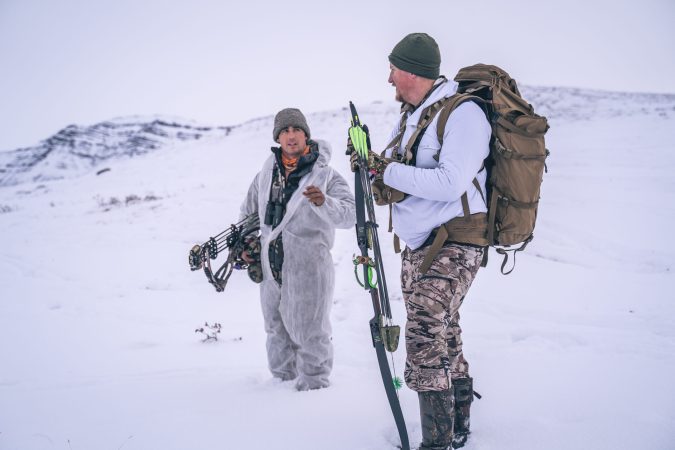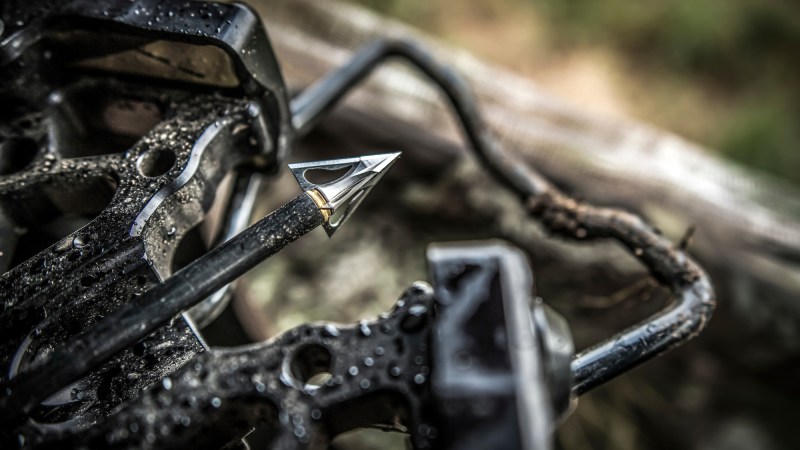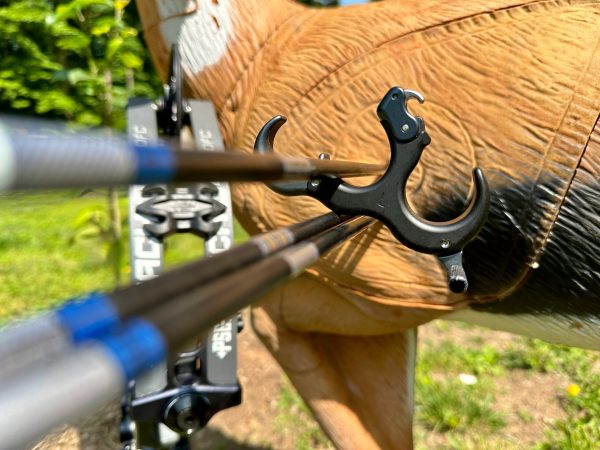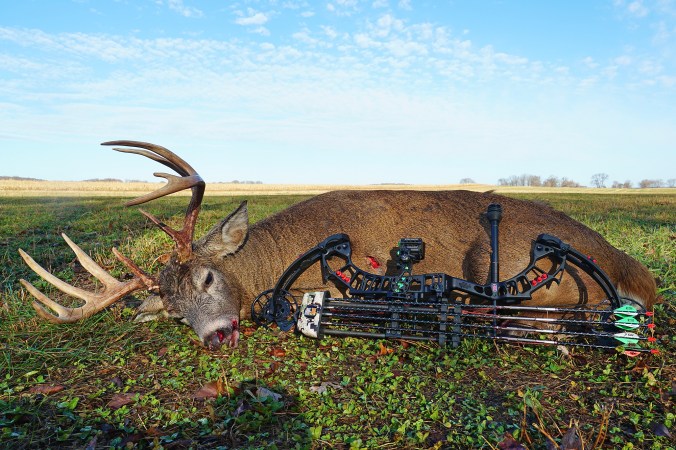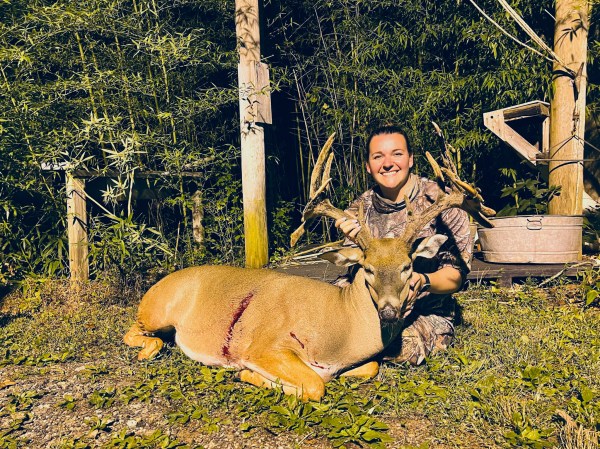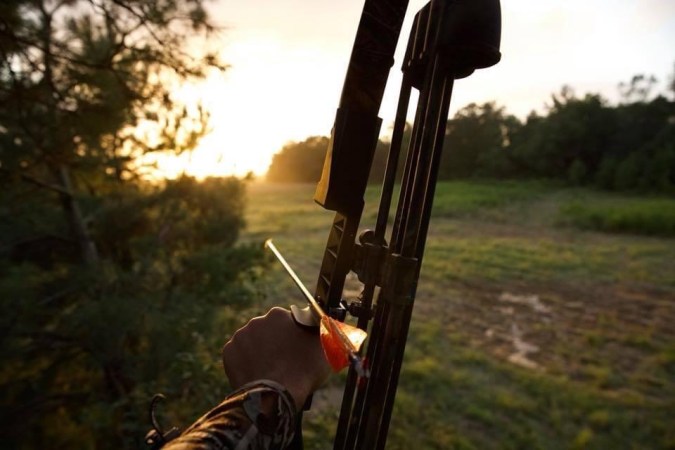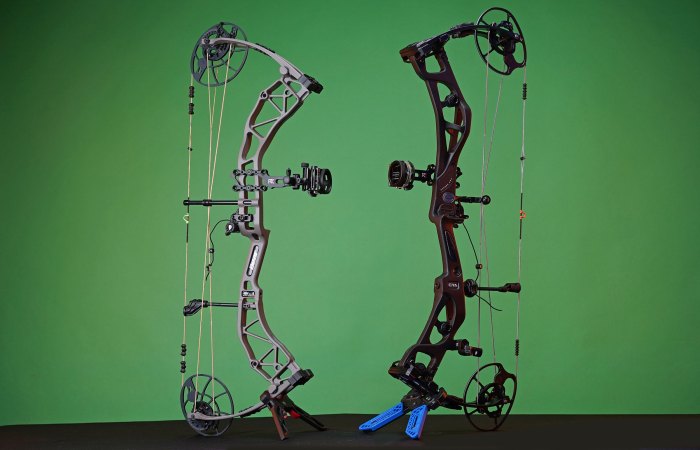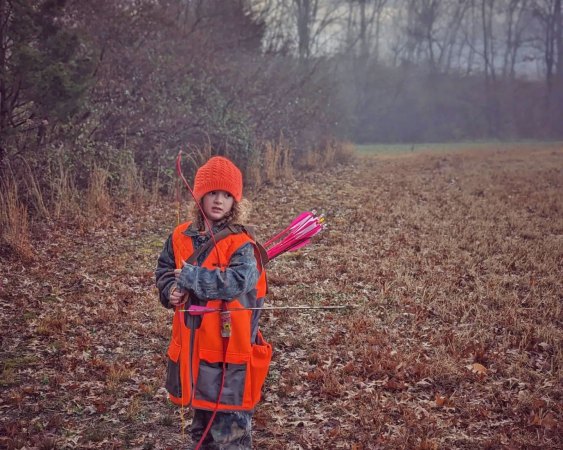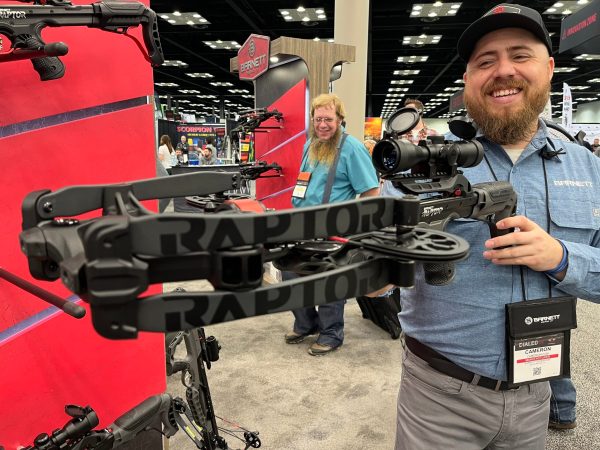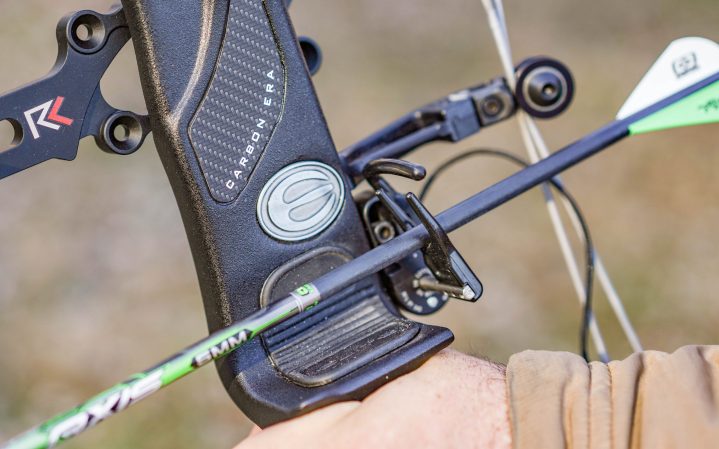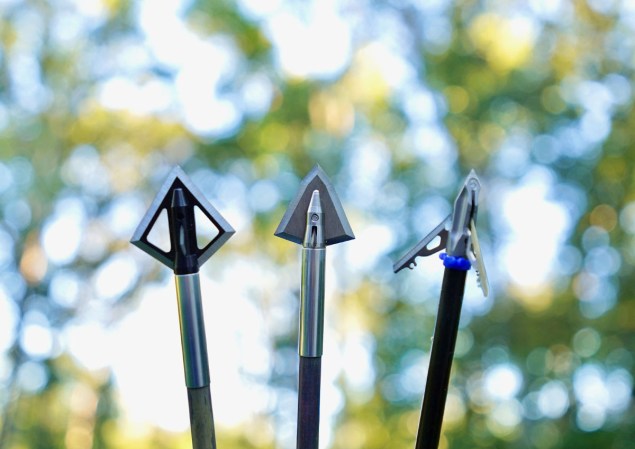We may earn revenue from the products available on this page and participate in affiliate programs. Learn More ›
The performance gap between compound bows and new crossbows seems to be widening exponentially. In the last few years of crossbow testing, we reviewed bows — the Ravin R500, Tenpoint Nitro 505, and TenPoint TRX 515 — that shot speeds faster than 500 fps, which was impossible to imagine just a few years ago. For reference, the fastest compound bow in the 2024 Bow Test — the Mathews Lift — generated a speed of 283 fps with a 406 grain arrow and a 29 inch draw set to 59.2 pounds of draw weight.
That performance difference is so substantial that many bowhunters still argue that crossbows don’t belong in regular archery seasons. Many of us also wonder when crossbow advancement might begin to plateau or when more game agencies might crack down on crossbow performance.
But if you look more closely, crossbows have their disadvantages, too. And flagship compound bows are better than they’ve ever been. Maybe the performance gap isn’t as wide as it seems at first glance? Below, we’ll dig into the objective performance differences between crossbows vs compound bows.
Arrow Speed
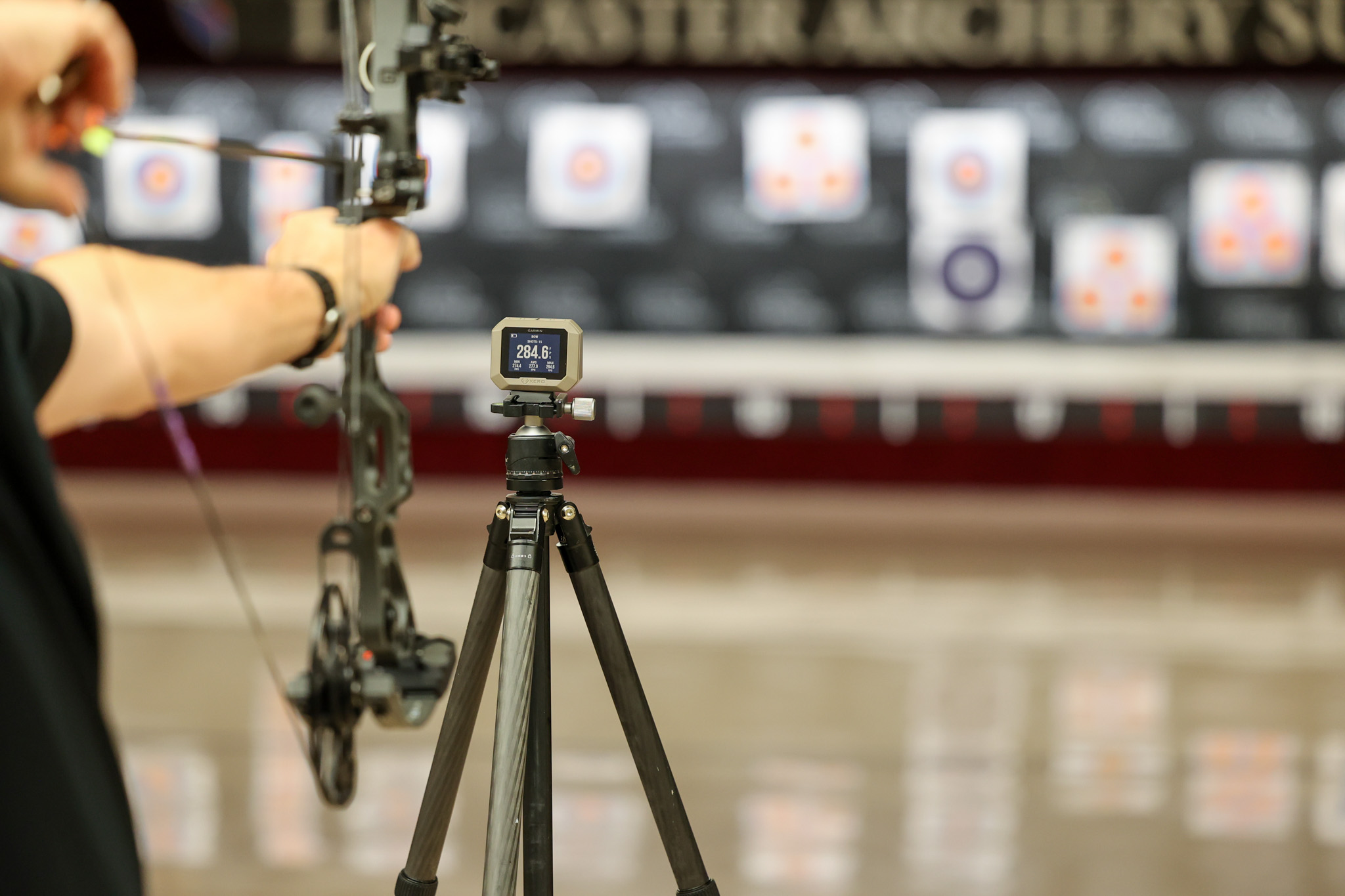
Photo by Natalie Krebs
Crossbows have the obvious advantage here. Because most modern crossbows utilize cocking devices, they don’t require much effort to cock and therefore they can be designed for massive draw weights. For example, the fastest crossbow on the market, TenPoint’s TRX 515, has a 300-pound draw weight. But you cock it by simply turning a crank.
A compound shooter must be able to draw his bow with his own strength — though modern cam design certainly helps. Most bowhunters are comfortable drawing a 60- to 70-pound compound bow. There’s only so much speed that a compound can deliver with that amount of draw weight. Here’s a look at the three fastest crossbows and compound bows from our 2024 bow test, where we chronographed each bow. You’ll notice that crossbows have about a 150 fps to 200 fps advantage. Even if you cranked the compounds up to 70 pounds, they’d still get smoked by the crossbows.
Crossbow Speeds
- TenPoint 515: 495 fps (445-grain arrow)
- Ravin R29: 453 fps (402-grain arrow)
- Centerpoint Sinister 430: 432 fps (398-grain arrow)
Compound Bow Speeds (406-grain arrow, 29-inch draw, approx 60-pound draw weight)
- Mathews Lift: 283 fps
- PSE Mach 30 DS: 281 fps
- Elite Ethos: 278 fps

Drop
As arrow speed increases, arrow drop over distance decreases. In other words, the faster crossbow arrows drop much less at distance than compound bow arrows do.
This is important in a hunting scenario where hunters have to judge range in order to make accurate holds. Say for example you range a deer at 40 yards. As you draw your compound bow the buck takes a few steps and is now at 45ish yards — or maybe he’s more like 50? For most compound setups that’s enough range difference to make a substantial change in point of impact. Not so much with flat-shooting crossbows.
To illustrate the extremes of this difference, we conducted a simple experiment. We shot crossbows and compounds at 20 yards and 50 yards. We used the same point of aim and hold point at both distances. In other words, we used the 20-yard pin or reticle hash at 50 yards. We then measured the difference between 20-yard and 50-yard arrows to illustrate drop. Here’s what we got.
- TenPoint 515 crossbow (495 fps): 2.5 inches of drop
- Ravin R29 crossbow (453 fps): 6.8 inches of drop
- Mathews Lift compound bow (283 fps): 28.5 inches of drop
As you can see, the fastest crossbows have impressively little drop from 20 to 50 yards. Arrows flung by compound bows drop significantly beyond 20 yards.
Accuracy
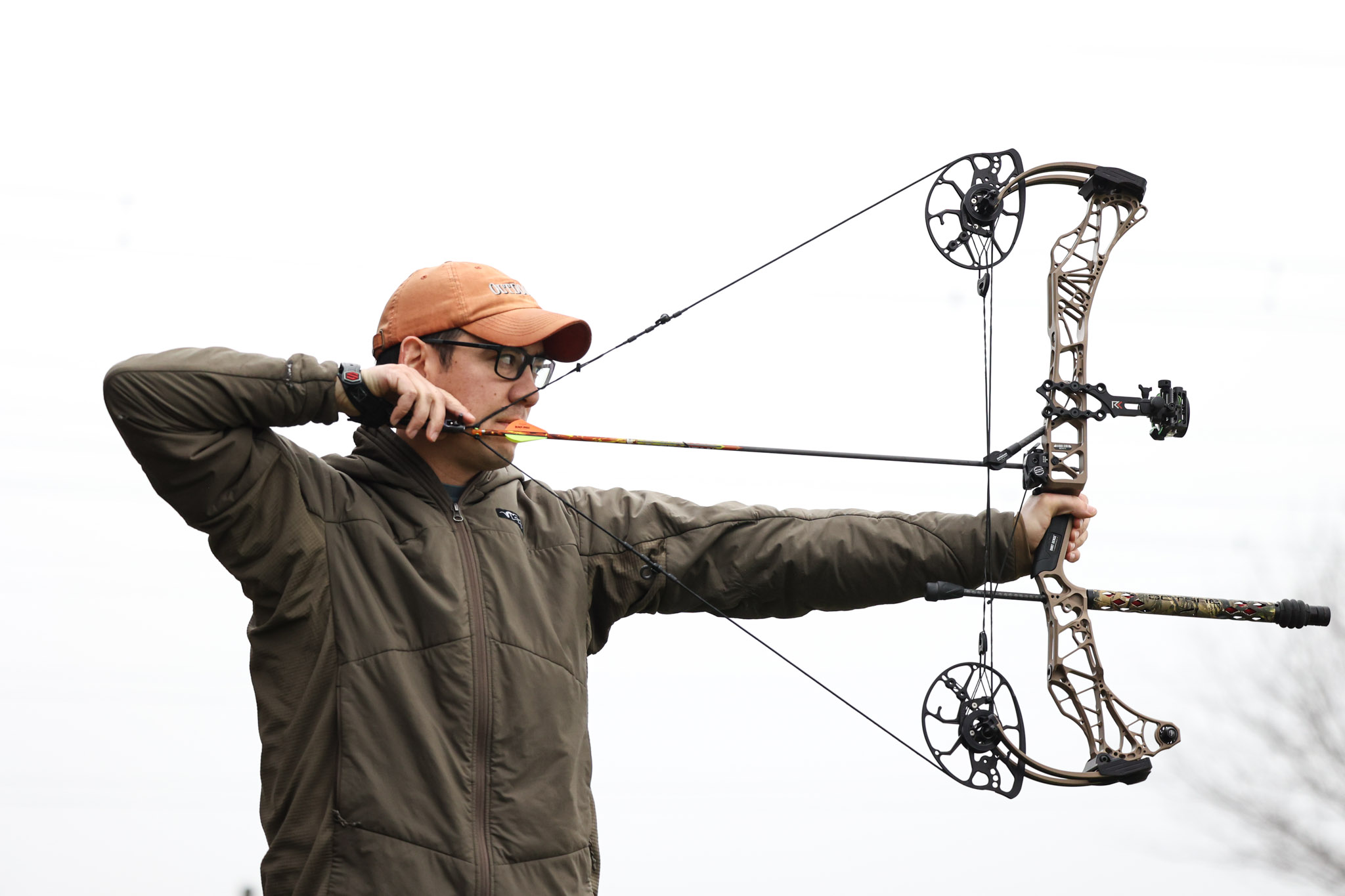
Photo by Natalie Krebs
There’s one critical metric where crossbows and compound bows are much closer than most bowhunters realize: accuracy. During our annual bow test we shoot all of the top crossbows and compound bows for accuracy at 50 yards. A team of three shooters shoot three arrow groups and then we average those groups to get a picture of accuracy for each bow and crossbow.
What we’ve found is that most accurate compound bows are very close to the most accurate compound bows. Here’s a snapshot of the five most accurate crossbows and five most accurate compound bows (when set up with stabilizers).
| Compound Bows | Group Average |
| PSE Mach 30 DS | 1.5″ |
| Mathews Lift | 2.27″ |
| PSE Evolve 33 DS | 2.68″ |
| Hoyt RX-8 HBX Xact | 2.76″ |
| Hoyt Alpha X 33 | 3.01″ |
| Total Compound Av: 2.44″ | |
| Crossbows | Group Average |
| Ravin R29 | 1.17″ |
| Tenpoint Venom | 1.65″ |
| Excalibur | 1.85″ |
| Ravin R10 | 2″ |
| Centerpoint | 2.24″ |
| Total Crossbow Av: 1.78″ |
There was a 0.66-inch difference between the averages of the most accurate crossbows vs compound bows with crossbows having the slight advantage. That difference is essentially irrelevant in a hunting scenario.
It’s important to note that what we were really testing here was field accuracy: how accurately a regular archer can actually shoot the bow or crossbow in the real world. If we’d have shot the bows out of a mechanical shooting device, like a Hooter Shooter, we’d likely get different results. But for bowhunters, the thing that matters most is the question: “How well can I shoot the bow?” So that’s what we measured.
We didn’t stack the deck in favor of compound bows with professional shooters, either. The compound bow testers were myself, Dustin Cimato, and P.J. Reilly of Lancaster Archery. Reilly and Cimato are expert shooters and veterans of the archery world. If you put them on a random public archery range they’d likely be the best shooters on the line, but they’re not winning national 3D tournaments. As for me, I’m a workaday archer. I’ve been bowhunting since I was 14, and I shoot diligently every summer so that I’m ready to be a lethal hunter in the fall. I don’t compete, I hang my bow up for the winter, and I’ve never had formal coaching. In other words, I’m probably just like you.
It’s also worth noting that the crossbows were shot from a position to optimize accuracy. We used a stable bench, either a bipod or a shooting rest, and rear bag. —A.R.
Why Modern Compound Bows Are So Accurate
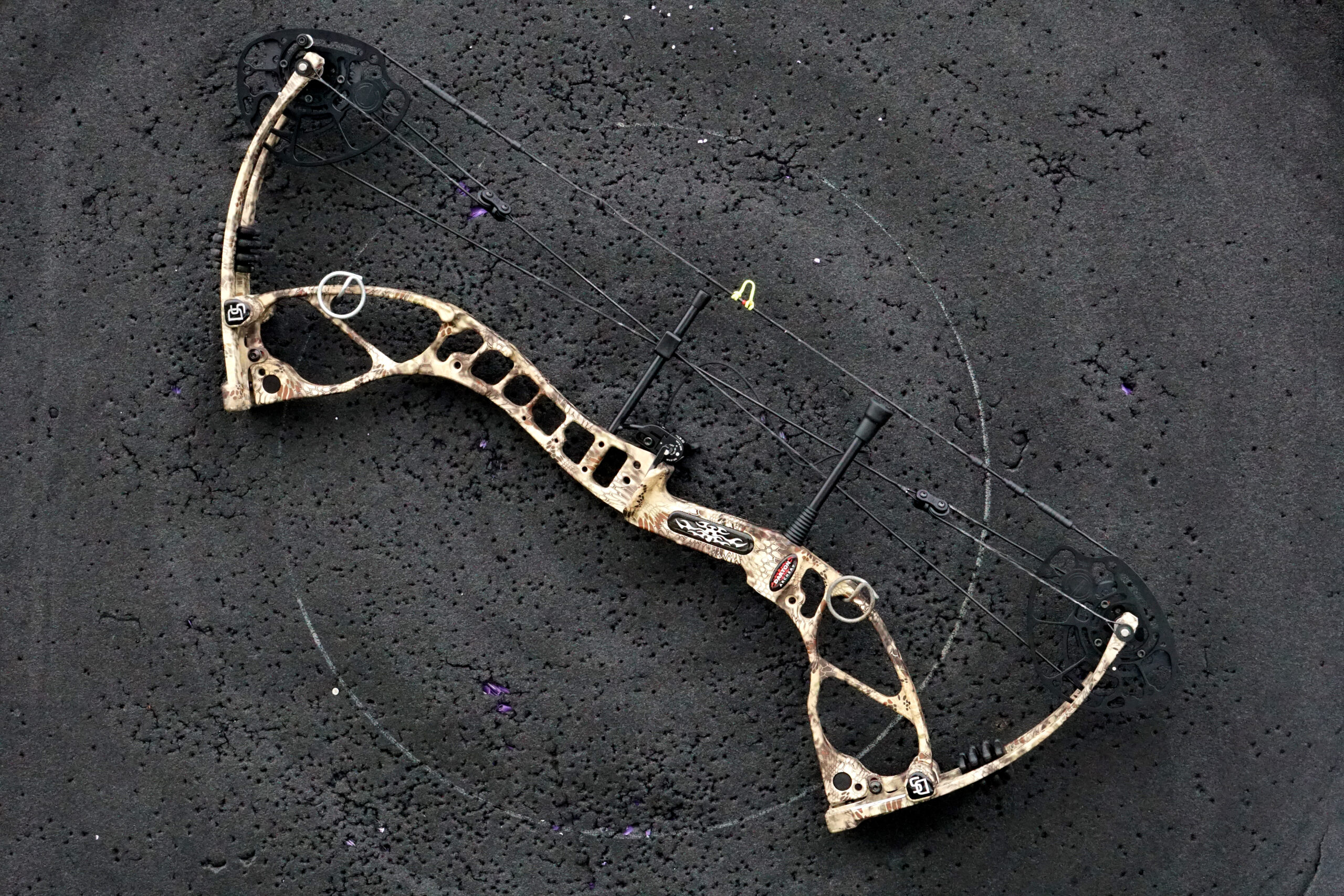
One of the biggest innovators in compound bows is Rex Darlington, who helped shape compound bows into the tack drivers we know today. He also designed the most accurate bow we shot at the 2022 bow test, the Darton Spectra E. You’ll find Darlington’s patents used in just about every flagship bow, especially his synchronized cam system.
“That cam system takes away a lot of the issues the shooter creates,” Darlington says. “It contributes a lot to the consistency and accuracy of the bow.”
One way it makes bows accurate is by eliminating nock-travel issues. Anyone who shot an early cam ½ system can appreciate the headaches the synchronized cam alleviates.
You might think that an arrow shooting from full draw travels in a straight line, but in some bow designs the nock end would move at an angle. In the worst designs, it would travel at an inconsistent angle. To solve the inconsistency issue, many archers timed their cams for a little downward nock travel to give the arrow a consistent direction. Another issue was that with each draw length adjustment, the nock travel changed, which made tuning bows a headache. Basically the synchronized cam system makes bows really easy to tune.
According to Darlington, one thing contributing to Darton’s accuracy is that their manufacturing process and specifications also make each bow very consistent.
“That bow should shoot a bullet hole just by lining things up, and there shouldn’t be any more tuning than that to the bow,” he says.We’ve seen that in the last three bow tests. Every bow shot a bullet hole with the same 350 spine arrow with very little adjusting needed.
Beyond the synchronized cam system found in almost every bow, many of the top bows had a wide limb stance.
“The limbs have gotten wider because it helps distribute stress and makes them less prone to fatigue. They hold up better,” Darlington says. “It also takes more effort to twist them, which makes the bow more stable.”
Bows used to have comfortable, albeit torque-prone, grips. These days most bows have a square, flat grip that promotes even and consistent grip pressure. There’s a reason target archers prefer a grip of that style, and bowhunters reap the same benefits. Another X factor is that there’s more archery information available. You can go to YouTube right now and get shooting advice from great coaches like John Dudley or George Rylas IV, and many bowhunters have. So you have fewer trigger slappers out there and more people shooting solid form. —S.E.
Why Modern Crossbows Aren’t More Accurate
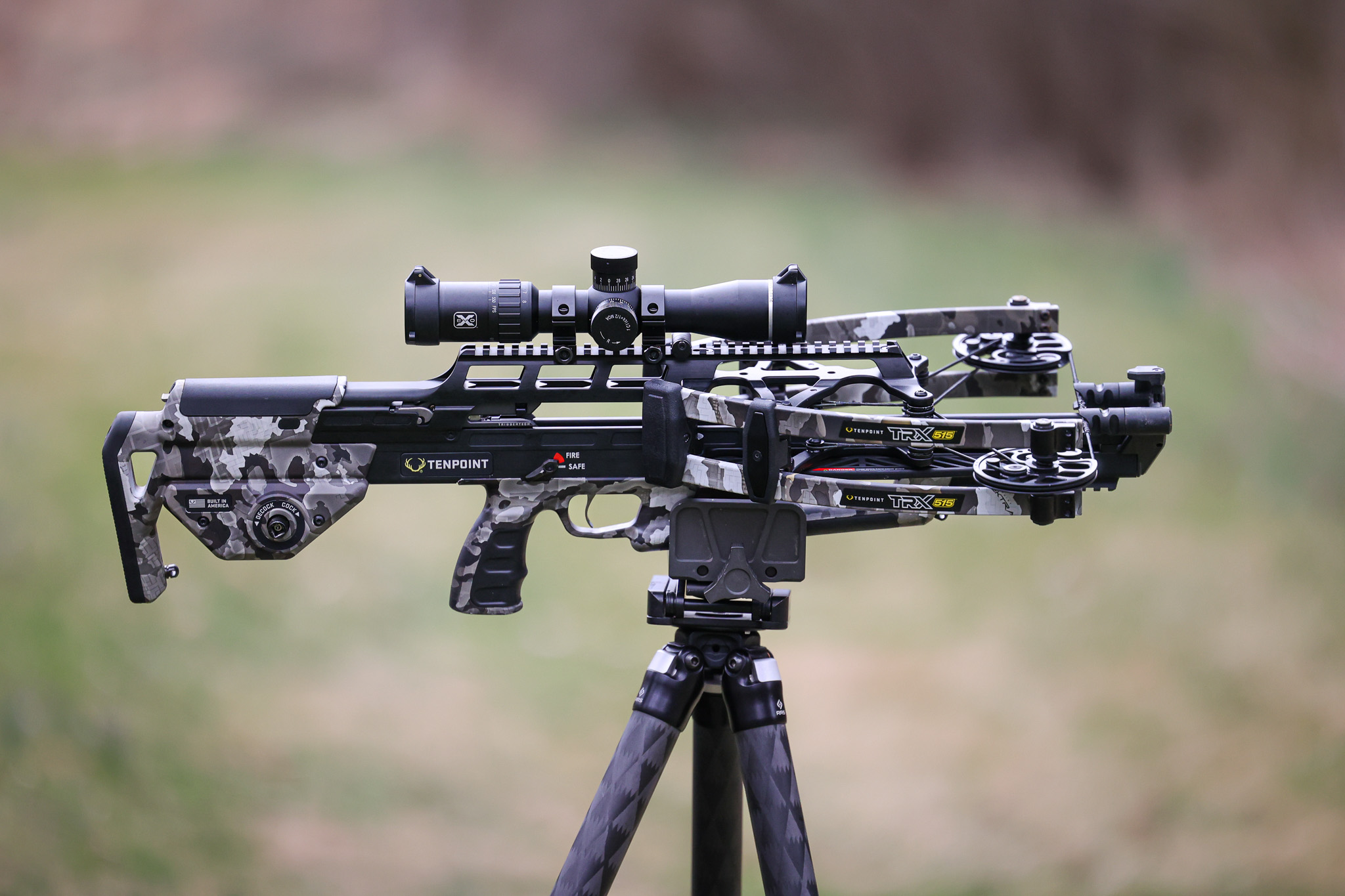
Photo by Natalie Krebs
While Darlington is known for his compound bow designs, Darton makes crossbows, too. Darlington provided insight into what’s holding back crossbow accuracy.
“The thing about crossbows is, if you take the arrow weight and you figure the amount of stored energy, it’s like shooting an under-spined arrow out of a compound bow,” he said. “So, you’ll encounter arrow flight issues you wouldn’t accept out of a compound bow.”
The issue isn’t the crossbow. It’s that the bolts they shoot aren’t optimized for their 300-pound draw weights. The result is the same as shooting a poorly-tuned compound bow. Another pitfall is some crossbow package bolts lack straightness and spine consistency. So, how do you get the most out of your crossbow? Reduce the speed by shooting a heavier bolt or a crossbow with a lower draw weight.
“[Mission Crossbows] has pretty much dominated crossbow tournaments, but they’re not shooting very fast speeds out of their crossbows,” Darlington said. “Their weights are under 200 pounds and that’s one of the things that contributes to their accuracy.”
We’ve seen evidence of this over the course of the last three crossbow tests. Bows in the low to mid 400 fps range tend to be more accurate than the fastest crossbows on the market. For example the Ravin R29 (452 fps) shot a 1.65 inch group average and the Tenpoint TRX 515 (495 fps) shot a 2.54 inch group average.
Long-Range Accuracy
If we had stretched the range of our test to 70 yards or 100 yards, you’d see crossbow accuracy start to pull ahead of compound bow accuracy. Most average compound shooters would have a hard time turning in 6-inch or even 8-inch groups at 100 yards. Shooting from a supported position, with a scope, the crossbow has too great of an advantage for all but the best compound shooters to overcome. But even with today’s ultra-fast crossbows, 100 yards should not be considered a reasonable hunting range. The bolt would be in flight for about three quarters of a second (more than enough time for the animal to move). Plus, at that range, wind can severely change a bolt’s point of impact. (I don’t know any average-joe crossbow hunters who have practiced enough with their setup to acquire accurate windage adjustments for 100-yard shots.)
Kinetic Energy
Some bowhunters get hung up on kinetic energy. Your arrow’s energy is one consideration for making a clean kill, but it’s far from the most critical factor. But before we dig into the details here, let’s look at the numbers. Below you’ll see energy comparisons of the fastest crossbow and fastest compound bow in our 2024 test.
- Tenpoint TRX 515 crossbow: 495 fps / 445 grain arrow = 242 foot-pounds KE
- Mathews Lift compound bow: 283 fps / 406 grain arrow = 72 foot-pounds KE
Crossbows blow compound bows away in terms of KE. You can optimize the KE of a compound bow by increasing arrow weight, but you’ll still have a hard time getting even close to what a top-end crossbow can deliver.
But realistically, this is not all that important of a data point for bowhunters. All of these bows deliver plenty of energy for adequate penetration with a well-placed arrow tipped with a good broadhead.
Here’s the key thing to remember: Regardless of their KE, arrows from compound bows and crossbows kill by the same mechanism: cutting through vital organs and causing exsanguination. Even the most powerful crossbows will not create the sort of hydrostatic shock that rifle bullets create. For example a little 55-grain .223 bullet generates 2,282 foot-pounds of energy (or about nine times more energy than the most powerful crossbow). In terms of energy and lethality, crossbows are much more similar to compound bows than they are to rifles.
Ease of Use
It’s relatively easy to become a competent crossbow shooter. If you’ve shot a rifle before, you’ve already got the basics covered. Cocking, loading, and decocking crossbows takes some practice before you feel comfortable, but crossbows are significantly more user friendly than they were only a few years ago. There are two downsides of crossbows: first they’re a little awkward in the field, and second they require continual maintenance (you should get the strings changed every year). A new set of crossbow strings will cost about $130. Compound bow shooters should get their strings changed as well, but most of us don’t have to do it every year.
Their biggest benefit is that they can remain cocked and loaded while in the stand. You don’t have to draw undetected the way you would with a compound bow.
Becoming competent with a compound bow takes significantly more practice. Mastering the art of hunting with a compound bow takes most of us a lifetime. But shooting a compound bow is fun. I look forward to those summer evenings slinging arrows in my backyard while the sun sets. I don’t know of any crossbow hunters who shoot their bows recreationally.
Build Quality

In terms of workmanship, top compound bows are superior to crossbows. Many have beautiful designs, carbon risers, and perfect ergonomics. The best compound bows are superb machines and anyone with an appreciation for high quality hunting gear will appreciate them.
On the flipside, even the most expensive crossbows on the market are lacking in terms of build quality. Most have an excessive amount of plastic parts. Their ergonomics are clunky. They are all shockingly loud (executive editor Natalie Krebs wears ear plugs while crossbow testing).
We’ve also seen several major malfunctions with crossbow limbs or cocking devices over the years. In recent history, we’ve never had a compound bow come to pieces during one of our tests.
Cost
This one is a draw. In our opinion, it’s worth going with a top end compound bow or crossbow, and both are spendy. Look to spend about $1,000 to $2,500.
The most expensive crossbow package (the TenPoint 515) in our test goes for about $3,400 at Lancaster Archery. Our most expensive compound bow (the Hoyt RX8) costs $1,950, which seems substantially cheaper, but then you’ve got to add a sight, rest, stabilizers, quiver, and arrows. You could easily sink $3K into a high-end compound bow setup. On the other end of the spectrum, you can find both serviceable compound bows and crossbows in the $600 to $750 range.
Read next: Best Compound Bows for the Money and Best Crossbows for the Money

Crossbow vs Compound Bow FAQ
Are compound bows more accurate?
Broadly speaking, compound bows are just as accurate as crossbows at moderate hunting ranges. That’s not to say that every compound bow is more accurate than every crossbow. And remember, the archer (not the bow) is always the most important factor in the accuracy equation.
What are the disadvantages of a crossbow?
Crossbows are loud and a bit unwieldy compared to compound bows. Plus, they can be difficult to cock while in a tree stand. However crossbows do have plenty of advantages over compound bows (see below).
Are crossbows easier to aim than bows?
Yes, crossbows are easier to aim because they have scopes and hold themselves at full draw. However shooting a crossbow offhand can be challenging. The best crossbow accuracy comes by placing the bow on a shooting rest, shooting sticks, or the rail of a tree stand or blind.
What are the advantages of a crossbow?
Modern crossbows are ultra-fast and relatively easy to use. Anyone familiar with shooting a gun can pick up a crossbow and shoot effectively at moderate ranges. Plus, crossbows remain cocked, so the archer doesn’t have to draw while the critter is in range.
Final Thoughts on Crossbows vs Compound Bows
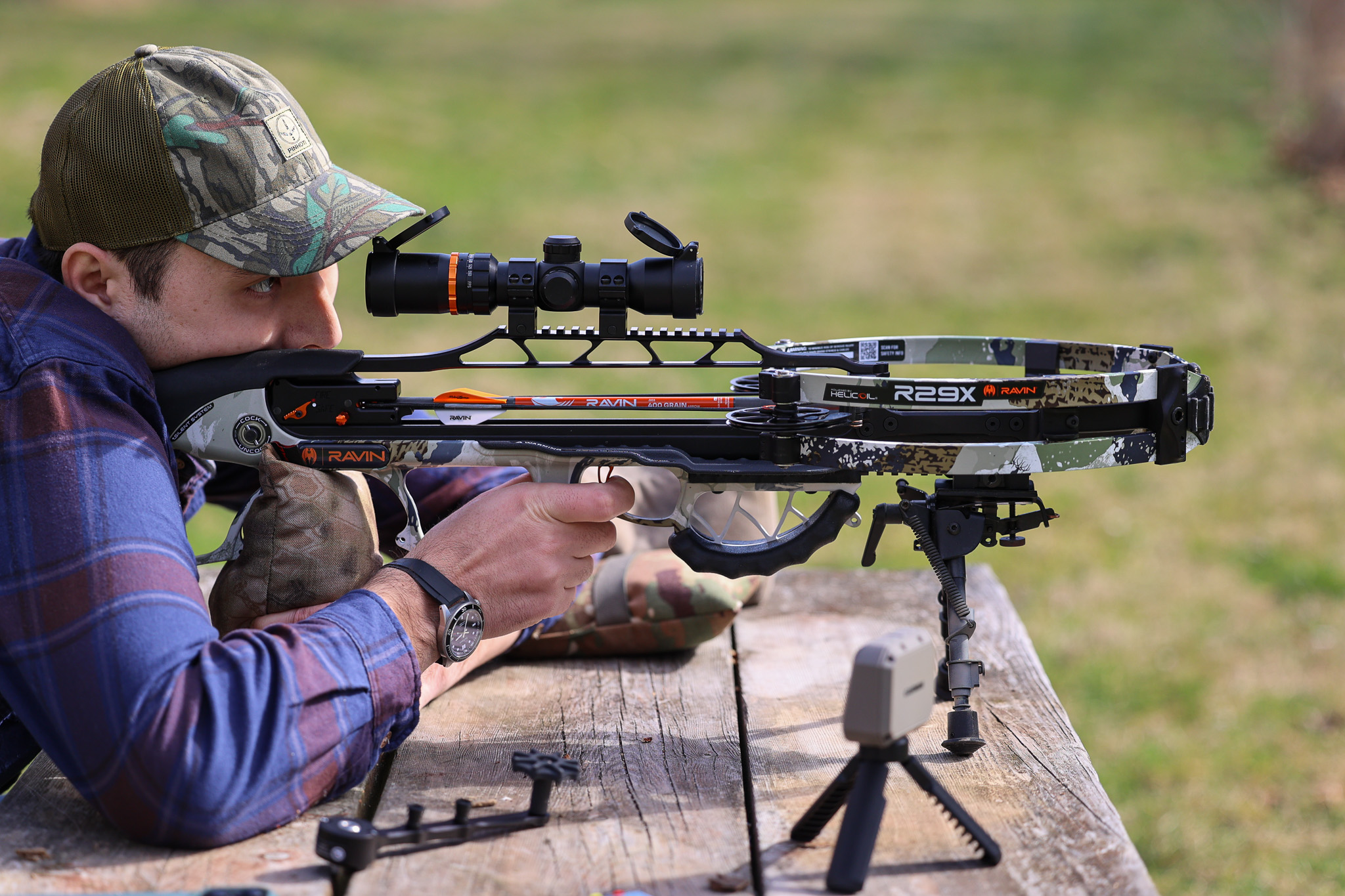
Photo by Natalie Krebs
Compared to compound bows, crossbows are more powerful and easier to use. But we shouldn’t over estimate their capabilities. They are not “cross guns.” Most are not impressively accurate. On the other side of the coin, top-end compound bows can be incredibly accurate in the right shooter’s hands.
While it’s true that crossbows are speeding ahead with innovations and incredible velocity, when it comes to reasonable archery ranges, compound bows are just as accurate—and in the right hands, even more accurate.

